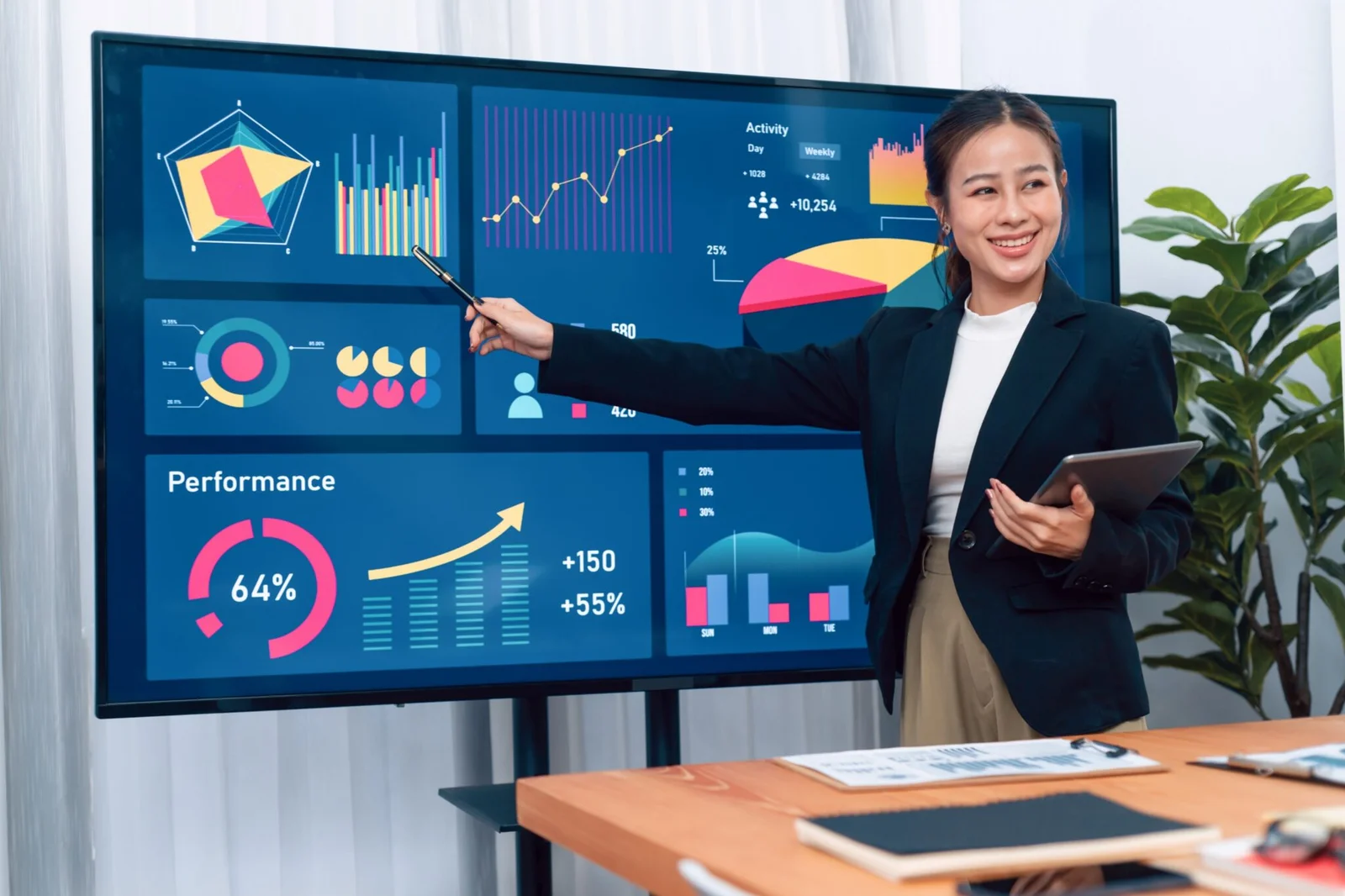Introduction
In today’s world filled with data, presenting information both clearly and persuasively is more crucial than ever. Data visualization—turning raw data into meaningful visuals—has changed how businesses, educators, and leaders share insights. A well-designed visualization doesn’t just look polished: it tells a story, simplifies complexity, and guides smarter decision making. Whether preparing a boardroom pitch or speaking at a conference, mastering visualization is your key to more effective communication.
The Benefits of Data Visualization
1. Simplifies Complex Information
Raw numbers can be overwhelming. Visuals like charts, graphs, and maps help audiences identify patterns, trends, and insights at a glance. Instead of poring over spreadsheets, viewers can quickly understand what’s important. Visual storytelling turns confusion into clarity—and better decision making.
2. Creates Engaging and Memorable Presentations
We process visuals far faster than text, which makes visual content more compelling and memorable. Infographics, interactive dashboards, and motion charts aren’t just decorative; they help your message stick long after the presentation ends.
3. Enables Faster Decision Making
Effective data visualizations deliver key insights almost instantly. This speeds up decision making, especially in high-pressure settings like board meetings or investor pitches. Clear visual storytelling can be the difference between being heard and being ignored.
Popular Tools for Stunning Data Visualizations
-
Microsoft Excel & PowerPoint: Great for quick, reliable visualizations like bar charts and line graphs—perfect when you're working directly within a presentation.
-
Tableau: Powerful for interactive dashboards and real-time analytics. Ideal for organizations needing dynamic data storytelling and visual exploration.
-
Google Looker Studio: A free, cloud-based tool that integrates with Google Sheets and Analytics to build collaborative and visually clean reports.
-
D3.js: A JavaScript library for coders seeking fully custom, animated, interactive visualizations. Best for advanced storytelling and web-based presentations.
Tips for Effective Data Visualization in Presentations
Choose the Right Visual Type
Use the chart format that fits your message:
-
Bar charts for comparisons
-
Line graphs for trends
-
Pie charts for proportions
-
Heat maps for patterns and intensity
Emphasize Clarity and Simplicity
Avoid unnecessary clutter, distracting colors, or excessive 3D effects. Use clear fonts, consistent legends, and labels. Simpler visuals are more trustworthy and easier to understand.
Add Interactivity When Possible
Interactive tools like Tableau or D3.js invite viewers to explore data—zooming, filtering, and uncovering insights on their own terms. This elevates static presentations into immersive experiences.
Conclusion
Data visualization is no longer optional—it’s a core communication skill. It bridges the gap between raw information and real understanding, transforming insights into action. For those wanting expert support, VGDS Global offers professional presentation design services that combine strategic thinking with visual excellence. Whether you’re building a pitch deck, marketing presentation, or investor report, let your data tell a story worth remembering.
Visit vgds.com to learn more about our data visualization and presentation design services and see how your data can become your most powerful storytelling tool.




